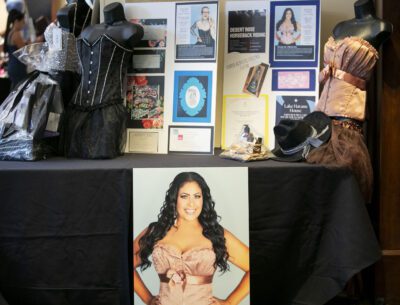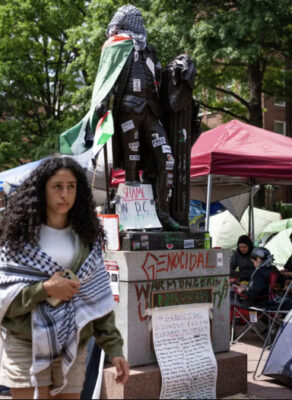So it was 40 years ago when we had one of the most memorable Santa Clarita Valley Dodger nights in history. A local girls high school softball pitcher faced the greatest pinch hitter in pro baseball history.
Now if that isn’t enough to pique your interest and get you out of bed, I’m a bona fide prairie fumbler for words.
We’ve a most interesting trail waiting ahead this fine May weekend in the Lord’s year, 2025, dear saddlepals. Keep an eye peeled. There’s crooks and heroes around every bend.
Oh. We have a new rider up front ahead of our history posse this weekend. That handsome fellow with an encyclopedia for a noggin, wise, handsome, sipper of questionable wine vintages, full of mirth and mischief and lightly toasted by the sun is none other than my good buddy, Skip Newhall. Skip made his transition recently and is joining the many immortals on these Signal time rides. Delightful dear fellow, that Skip. But if any of you newer SCV natives are riding next to him this morn, borrow some masking tape and apply liberally on both sides of your head. Skip’ll talk your ears off. Honored to call you a friend all these years, amigo …
That warning aside, squeeze (the horse) firmly and hold onto your hat as we ride through the time continuum into the Santa Clarita of yesteryear …
WAY, WAY BACK WHEN
NATURE’S FINEST CHAPEL — Newhall Community Church used to own part of Placerita Canyon. Yup. It’s true. In 1905, Frank Walker homesteaded in Placerita Canyon and acquired his grandfather’s original homestead. Frank also bought 200 acres from the church for $10 an acre. Frank was a bit of a medieval monarch. He met Hortense Reyneir, whose father owned a neighboring 600-acre spread in Placerita. Horty and Frank would eventually marry and have — are you sitting — 12 kids.
ANOTHER NEWHALL FAMILY MEMBER MAKES THE PAPER — On May 13, 1825, one of the 19th century’s most energetic capitalists, Henry Mayo Newhall, was born in Saugus, Massachusetts. He would go from being a penniless young failed prospector to one of California’s wealthiest men in a span of a few years. Eventually, he would buy the entire Santa Clarita Valley at a sheriff’s auction at less than $2 an acre.
ED’D RIDE A MILE FOR A CAMEL — Still on May 13, but in 1856, the famed camels of Gen. Edward Fitzgerald Beale would march through downtown Newhall, bound for Fort Tejon. They were an ill-fated experiment by the Army to navigate through the hot and desolate climes of Central and Southern California.
HIS FATAL FLAW WAS IN HIS TROUSERS — May 14, 1874, famed womanizing bandito and California’s most wanted outlaw, Tiburcio Vasquez, was literally caught with his pants down. He was visiting a girlfriend when L.A. Sheriff Billy Rowland and his posse surrounded the house and ordered him to come out. Tibby vaulted out a window and was trying to escape while putting on his britches. A deputy shot him in the butt. His reign of terror would later end in a San Jose hanging.
CACTIS KATIE OF CANYON COUNTRY — It is truly amazing how hearty some of the old-timers were. Back in 1915, “Cactus” Katie Freels and her little daughter Rose homesteaded 60 acres in Lost Canyon. The two ladies weren’t exactly welcome. Grumpy neighbors didn’t want mother and child and tried to keep her out. It was sort of a woman’s version of “Shane.” The neighbor even ran his horses through her vegetable garden to drive her away. Once, the neighbor put up a locked gate to her place. Cactus Kate blew the lock off with her shotgun. Kate, who was just the smallest bit of a woman, and her daughter would dig their own well and use canvas bags to tote rocks from the creek. With the rocks and timber they cut, they built a small cabin and scratched out an existence, raising livestock and small farm animals. They grew what they needed. Mother and daughter were almost washed out by flash floods, almost burned out by fire, almost frozen by January blizzards. Still. Cactus Kate loved the Lost Canyon life, preferring it to the rhythms of civilization. Her daughter would marry and become Mrs. Rose Norrish, who lived in Canyon Country long after her mother passed away in the early 1950s.
MAY 17, 1925
YEAH. BUT WHAT ABOUT THE HOA FEES? — The new housing project of Newhall Heights made it pretty tempting to buy a house. Can you imagine buying some prime land off of present-day Lyons Avenue at this rate: $5 down and $1 a week — TOTAL price for the lots: $100?
EVERYBODY’S HAPPY! — The precursor to Happy Valley (Newhall Heights) also unofficially changed the name of Pico Canyon Road (today, Lyons). Back then, briefly, Lyons was known as Newhall Heights Boulevard.
STILL A GREAT WESTERN A CENTURY-PLUS LATER — Local cowboy and World’s Most Famous Movie Star released his epic Western, “Riders of the Purple Sage.” In this classic, Tom Mix plays a Texas Ranger seeking to save his sister from los malos. It was based on the Zane Grey novel. Back then, local folks had to motor (or ride their horses) all the way to San Fernando’s Cody Theater. A little trivia? “Riders of the Purple Sage” is regarded as the most popular Western novel of all time. It was turned into, of all things, an opera in 2017.
COP & GOLD MINER — O.E. Smith and partners started trucking in loads of timber to build a bunk house and camp for their new gold mine 18 miles up Bouquet from the Saugus junction. Local constable Jim Biddison also owned a gold mine up there.
MAY 17, 1935
SHADY OLD MAIN STREET — Maybe it was progress, but it was debatable if it was better afterward. Work continued to widen Spruce Street (today, Main Street in Downtown Newhall). Several ancient big oaks and old eucalyptus planted in the mid-19th century were removed to accommodate new telephone and electric poles and the place had a shaved look that still is with us today.
I’D TAKE JUNE GLOOM ALL SUMMER — June Gloom came in May. For the first time in two weeks, locals were grinning: the sun came out.
RED ALL OVER — I’m not so sure how accurate this is, but little New Era Elementary School (up Bouquet Canyon) boasted that it was the last “little red schoolhouse” in operation in all of California. I’m not sure how long this lost school was around, but I know it was here at least back in 1919. As far as the last little red schoolhouse? Don’t forget that ancient one on Highway 126 …
MAY 17, 1945
A QUIET END TO WAR — V.E. Day (Victory in Europe for World War II) passed rather calmly here in the SCV. There was no whooping or yelling. All the SCV bars and liquor stores closed for the day, as were the three grocery stores. Bermite, the big munitions maker in Saugus, stayed open. Same day V.E. fell on, John Wagner died up in Agua Dulce. He was a vet from World War I.
THE INDIANS THANKED THE VAN HORNS — The brand, spanking new William S. Hart High District (which still had the working title of Santa Clarita for a few months) purchased another 7.5 acres of land to add to the Newhall campus. The Van Horn family put an asking price of $8,000 on the property. The new trustees figured it was a pretty stiff price, but voted to buy it anyway. That gave the Hart High Indians a 27.5-acre campus.
SANTA CLARITA BEFORE SANTA CLARITA — A few alleged old-timers have questioned the use of plain, old, “Santa Clarita” in my prose. On this date, 80 years ago, the local Kiwanis Club ran a big advertisement, urging folks to participate in the war bond movement. The ad read: “People of The Santa Clarita” and went on to urge residents that we needed to raise $135,000 for the war effort. Of course, folks have been using the term, “Santa Clarita,” since the 1930s, perhaps longer.
MAY 17, 1955
BUGLESS FAIRBANKS JR. — There was an area north of Castaic that was, for a while, completely bugless. A tanker truck loaded with insecticide flipped coming down the grade after hitting another big rig. The ever-friendly California Highway Patrol guided motorists through a cloud of powder so thick, drivers couldn’t see 20 feet in front of them. Anybody with gills living in Castaic today can thank the pesticide people and the CHP.
THE HAY YOU SAY — Speaking of odd accidents, hay meteors were bouncing off of old 99 a half-century back. Another truck caught fire and a co-driver climbed out of the moving truck up on top and was cutting bales of flaming hay loose. Cars and trucks swerved to avoid the bouncing, flaming blocks. Total loss of crop was $210. The truck? Ten times that.
WHEN LIFE STARTED GETTING LESS AND LESS WESTERN — The 1955 Newhall-Saugus Rodeo was the smallest since 1939. Admissions did not reach 10,000 for the two days. The rodeo in earlier years attracted over 50,000 people some years. Movie actor/driver Ben Johnson earned second-place money in the wild cow milking contest. I think I’ve mentioned ol’ Ben would later win an Oscar for Best Supporting Actor in “The Last Picture Show.”
HOUND OF THE BASKERVILLES WEATHER — June Gloom came early again in 1955. Three accidents a half-century back were blamed on the soup. All of them were on present-day Railroad Avenue at the Circle J entrance.
CONCRETE CONSERVATION — Something we haven’t observed in decades is Soil Conservation Sunday. It was developed in 1954, under the request of cattlemen and farmers. A Signal editorial suggested we drastically needed “a re-awakening of man’s obligation to the land.” The Signal pointed out we are not owners, but stewards of Earth. Don’t know if we have much “Earth” showing under all the concrete …
NEVER SHALL THE COUPLE PART — The cause of death for Bart Bowles was officially listed as a coronary. Friends and neighbors of the man who lived in “Castle Cove” on Market Street for 30 years knew different. Bowles’ wife of many years had died two weeks earlier and since then, the friendly man who loved his bride so had refused food or attention.
MAY 17, 1965
TAKING THE HOPELESS WAY OUT — Life apparently held no meaning for a young oil field worker. He had been arrested after a hitchhiking incident in which 25-year-old Ronald Hoffman heaved a rock at a car that didn’t stop to pick him up. In his Newhall jail cell, the Fillmore man could not be consoled. He wept for several minutes and then was quiet. When a deputy came in to investigate, to his horror, he saw the young man had hanged himself from the bars with a blanket.
WOULD A ROSE SMELL AS SWEET? — We’ve been branded with so many names over the years. On this date, the county Regional Planning Commission held hearings to come up with a unifying name — even if it were only for planning purposes. The Signal tried to push Valencia Valley but not even The Newhall Land & Farming Co. was behind it. Art Evans, who owned the other paper in the valley — The Sentinel — opted for Santa Clarita. Jack Nelson, who ran the now defunct Santa Clarita Bank, said he didn’t give a rip what people called the valley, but said he felt that the RPC had no business whatsoever picking a name for us. The RPC chairman expressed sincere regret that we were so passionately divided over the issue.
MAY 17, 1975
ANOTHER SLOW DAY IN SCV JOURNALISM — The lead story of The Mighty Signal 50 years ago was how one of our staff photographers snuck up behind about a half-dozen high school-aged kids at a swimming hole along the Santa Clarita and took pictures of them while they skinny-dipped. The spot was called Manny’s Pool.
MOUNTAINS CLAIM ANOTHER AIR DEATH — On this date, William M. Garland, 38, died with a friend in a small plane crash near Gorman. Garland was the cousin of Los Angeles Times Publisher Otis Chandler.
SNAKES ALIVE, JERRY!! — Channel 7 Eyewitness News was up at Castaic to film a feature on snakes. Park spokesman and local historian, Jerry Reynolds, took a small sampling of non-poisonous snakes, including a small boa. The little constrictor slipped out of his cage and went right for the newslady’s leg. The creature then slithered its way up the woman’s limb while Jerry reached up and the woman pushed down. A blushing Mr. Reynolds removed the reptile from the woman’s upper thigh. The newscaster confessed she wasn’t wearing anything BUT the dress …
MAY 17, 1985
WHAT EXACTLY DO THEY DO NOW? — On this date 40 years back, our local Chamber of Commerce was given official accreditation by the national organization. That’s supposedly a good thing.
GOOD LADY SAM & THE SERIOUS HEAT — At first, the scaredy-cat L.A. Dodgers refused a challenge by this newspaper four decades back. The Mighty Signal offered to pay $1,000 to the MLB team’s charity of choice if any batsman they picked could get a hit off local high school softball pitcher, Samantha Ford.
In the meantime, Hart senior Ford faced a frosh sensation from Burroughs dubbed, “The New Queen of Softball.” Ford and Hart beat queenie 4-0. No Burroughs player made it to second. Only one hit it out of the infield. Ford struck out 15.
The Dodgers came back a few days later, after being teased nationally, and offered to send 47-year-old pinch hitter Manny Mota up against Samantha Ford. In front of 7,000 local fans on the 8th Annual SCV Dodger Night, Ford threw 10 pitches — five balls, two foul balls and three strikes. Mota didn’t get a hit. Nonetheless, The Mighty Signal paid $1,000 to the Dodgers’ favorite charity.
Today, Samantha Ford is still familiar to many in the SCV as the principal of Emblem Academy in Saugus.
• • •
That sure was a fun time on the trail this morning. Appreciate all of you sharing part of your weekends with me and The Mighty Signal. We’ll surely do it again in seven. Have a good sabbath and vayan con Dios, amigos!
Local historian and the world’s most prolific satirist/humorist John Boston hosts an eclectic bookstore and multimedia/commentary website at johnlovesamerica.com/bookstore. Pick up his two-volume set on SCV ghosts, maniacs, murderers and monsters about America’s most-haunted town — the Santa Clarita Valley — and other books.













